
After a year since putting a hydrogen-powered engine on the racetrack, Toyota revealed that it has started research and development for commercialization. Here, we look at what lies ahead along the technology's long but rewarding journey.

ROOKIE Racing’s hydrogen-powered GR Corolla and GR86 running on carbon-neutral synthetic fuel, completed the Super Taikyu Fuji 24 Hours Race at Fuji International Speedway on June 5.
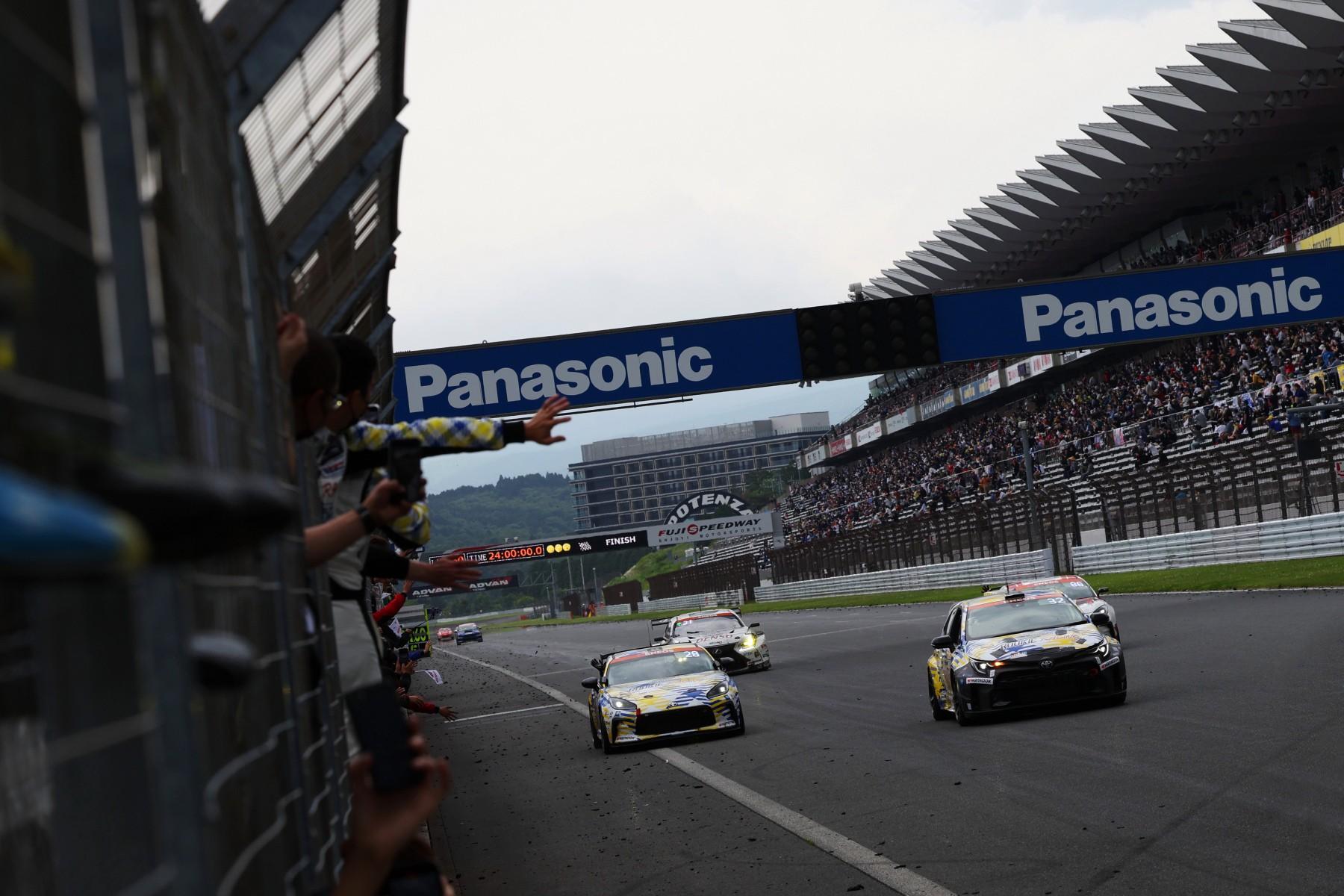
This marks almost a year since the hydrogen-powered Corolla’s first race. The vehicle completed 478 laps, 120 more than last year, thanks to improved vehicle performance and fuel efficiency, as well as reduced hydrogen refueling time. Pit stop time was about four hours in total, the same level as last year.
With the vehicle’s ever-improving performance, more and more people expect it to hit the market.
In fact, Toyota presented a roadmap for the hydrogen engines market introduction at a pre-race press conference.
This article takes a closer look at where Toyota stands in hydrogen-powered engine development and what lies ahead.
At the fourth station toward the market introduction
Koji Sato, GAZOO Racing company president, used the graphic below in his briefing to the press when describing the current development phase.
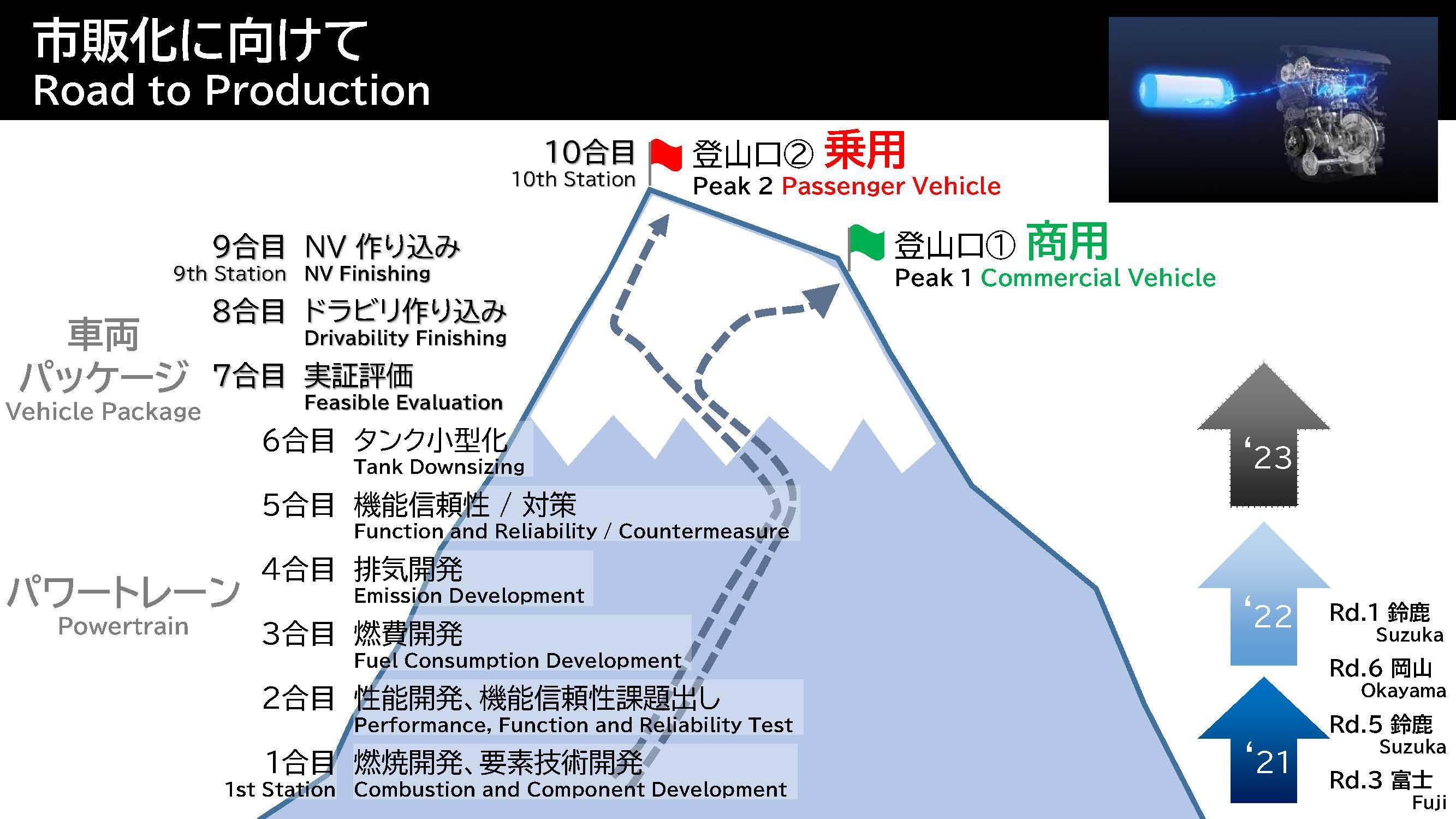
Sato
Since we’re here at the Fuji International Speedway today, let me explain the path toward the hydrogen engines’ final market release by using the example of climbing Mt. Fuji.
There are many milestones, but right now, I think we are at around the fourth station. We will pursue two goals moving forward: one is for commercial vehicle use and the other for passenger vehicles.
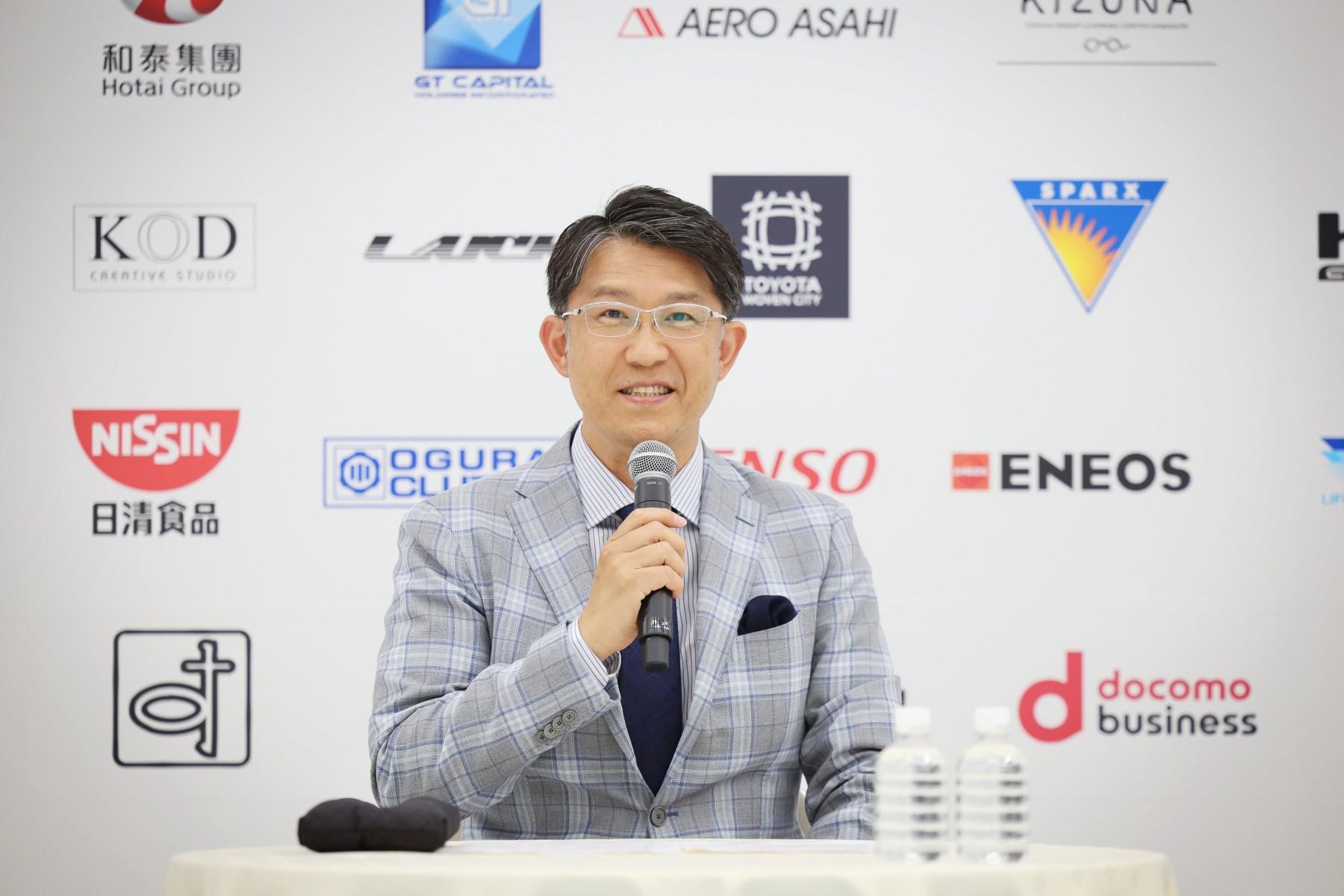
The hydrogen-powered engine has achieved 20% more output and 30% more torque in just a year, outperforming similar-class gasoline engines and allowing for a 20% more driving range. At the same time, hydrogen refueling time has been reduced by 70%, from five minutes to one and a half minutes.
However, market introduction requires much more work.
The bottom half of the roadmap includes various powertrain development steps. The fourth station is only a mid-way point.
The upper stations represent work on further powertrain development and completing a vehicle package, including car layout factors like drivetrain, controls, cabin space, and cargo space.
Passenger vehicle packaging
Securing rear-seat space is a significant part of the passenger vehicle package in mass-market production.
Four tanks occupy the back seats of the racing hydrogen-powered Corolla, which would have to be much smaller or located outside the cabin to allow passenger space.
Understanding that requirement, Toyota displayed a demonstration vehicle that explores a compatible vehicle package at the circuit’s event space during the race.
A Corolla Cross, fitted with the same three-cylinder turbo-engine as the hydrogen-powered Corolla, had two tanks mounted below the floor. It stood testament to R&D progress on market introduction.
The challenge of liquid hydrogen
One promising approach to securing those rear seats is the use of liquid hydrogen.
Currently, only gaseous hydrogen is used for vehicles. Converting that to liquid has the advantage of boosting energy density and increasing driving range.
Gaseous hydrogen must be filled under high pressure, which requires cylindrical tanks, but using liquid hydrogen can make the tank shape more flexible and weight lighter.
That could allow for greater capacity tanks mounted under the back seats.
The event also had a liquid-hydrogen-powered GR Corolla concept model on display next to the hydrogen fueling area. Toyota engineers said that liquid hydrogen could double tank capacity.
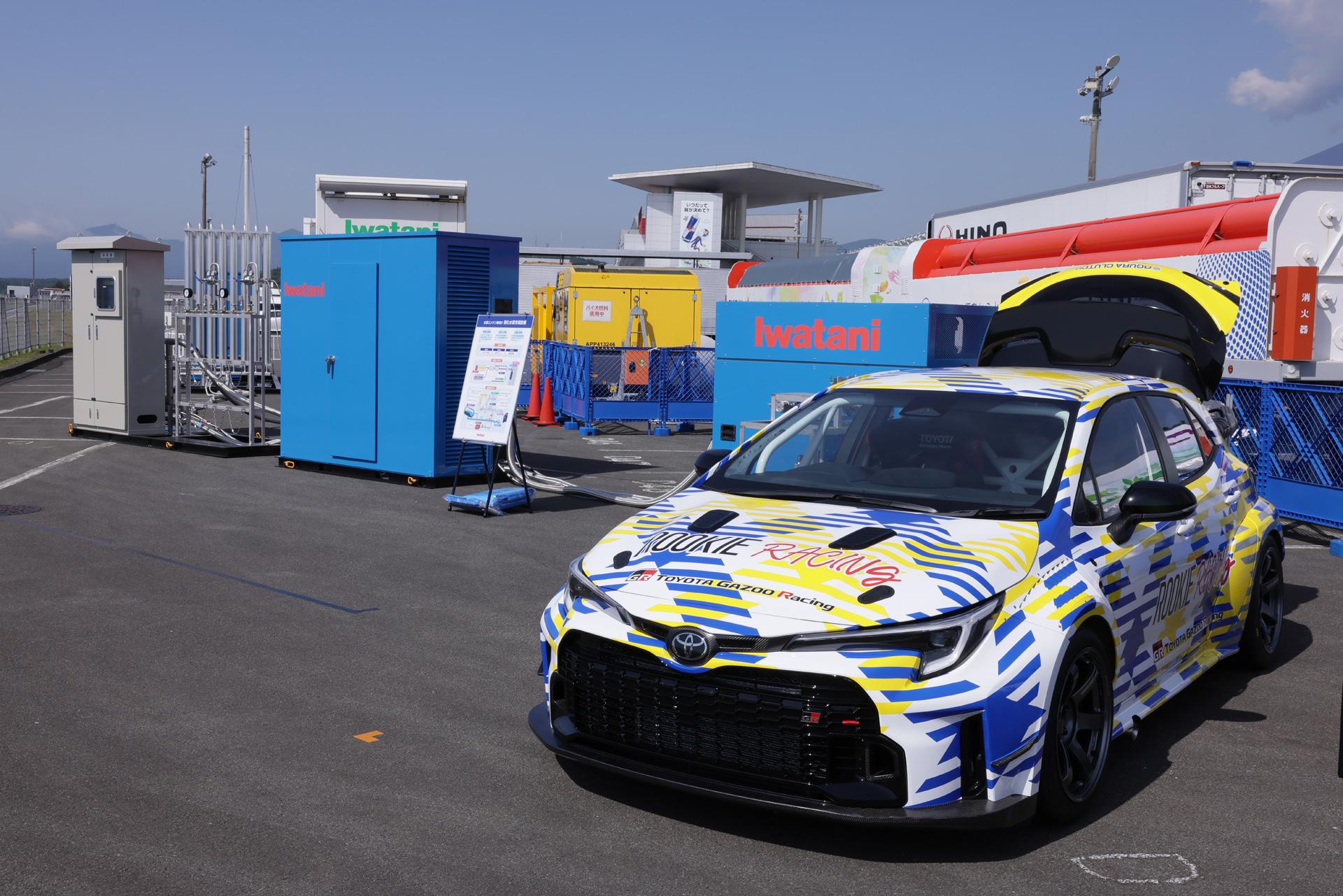
Liquid hydrogen also has the potential to change the hydrogen fueling area package.
One tanker truck of liquid hydrogen can carry enough fuel for six teams to compete for 24 hours.
Furthermore, it can downsize refueling areas to a quarter of the current size, since equipment for gaseous hydrogen such as compressors and pre-coolers are no longer needed.
That would allow hydrogen refueling in a pit just like gasoline vehicles, which would enhance hydrogen engine cars’ race competitiveness.*
* Currently, hydrogen refueling happens in a mobile station located apart from the pit.Naoaki Ito, Project General Manager with GR Vehicle Development, explained the meaning of working on liquid hydrogen.
Ito
We proposed hydrogen engines instead of hydrogen fuel cells to increase the number of hydrogen vehicles on the road. Firstly, we have more options for powertrains.
The next step is to increase options for loading hydrogen. I don’t think liquid hydrogen can satisfy all needs even if liquefication technology is successfully achieved.
Gas and liquid forms both have their advantages, so we should remain open to many options.
Of course, liquid hydrogen poses unique challenges in actual application, including difficulties in filling and storing, such as maintaining a temperature lower than -253℃ and preventing the hydrogen from naturally evaporating from the tanks.
“There is still a long way to go before application for racing,” says Tomoya Takahashi, GR Vehicle Development Division’s General Manager. “But our members are working hard, believing that we need to take action now to make a difference in the future.”
The path toward production
After further developing engine performance and a vehicle package, as well as expanding fuel options, the final steps to market introduction require development for general use off the racetrack.
For example, racing drivers use the full acceleration range from zero to full throttle, but ordinary people rarely drive that way. There is still a need for daily use data.
It is also still early to say that all those steps below the fourth station are fully resolved.
The earlier climbing map has combustion and component development at the first station. The hydrogen-powered engine is suffering from an issue known as pre-ignition even in this race. Even now, the first and second stations still need more solid footing.
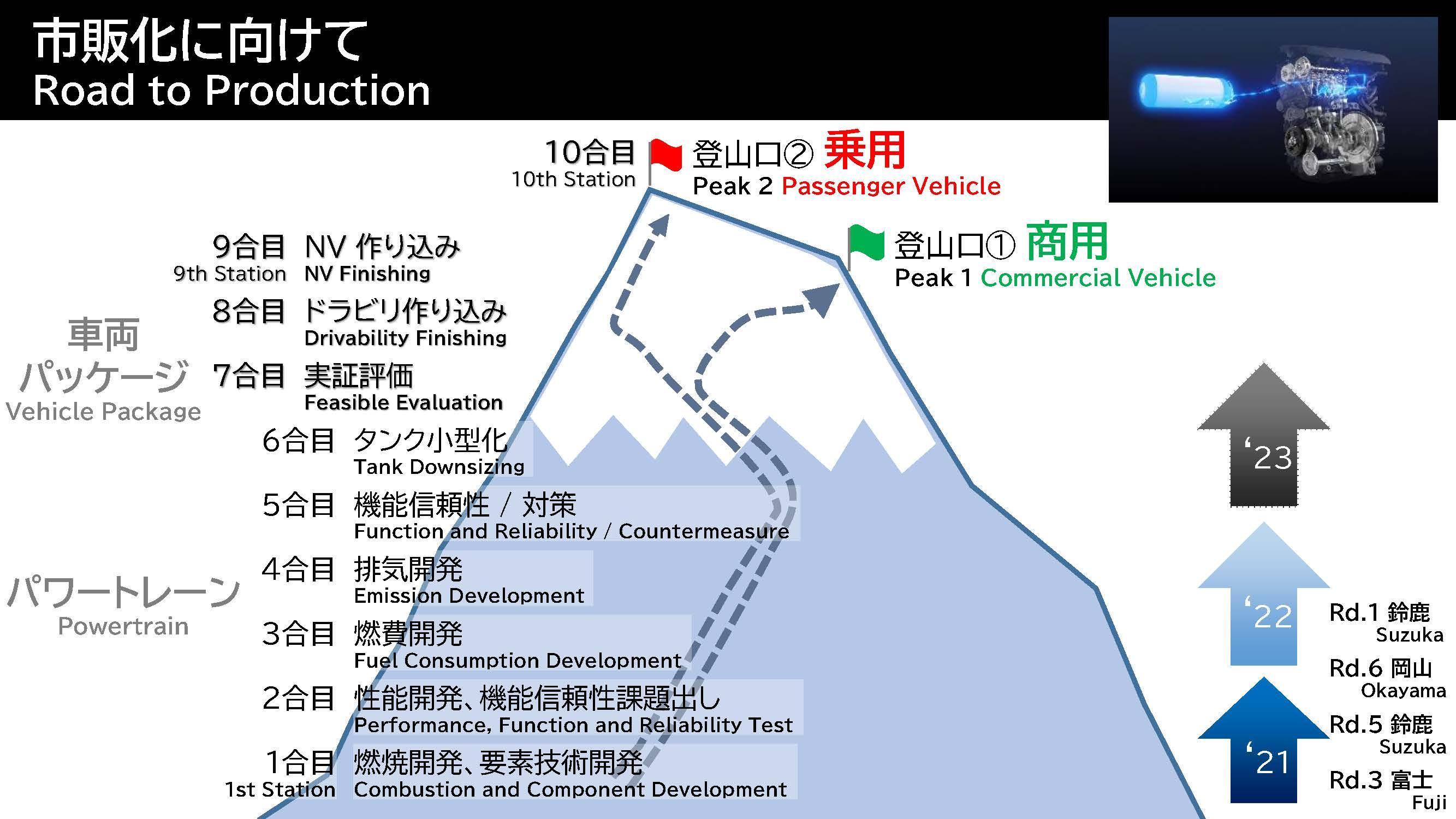
GAZOO Racing president Koji Sato explained why the company shared the current development phase even with the peak still far above.
Sato
We still have not decided on mass production, but only when we pursue it can we see issues to solve.
The current package may actually be viable enough in racing, but there’s much more to be explored because we aim for market introduction.
Just like in real mountain climbing, reaching the fifth station may be easy, but heading up to the peak, you start to face real challenges. The going gets tougher with falling rocks, bad weather, and thin air.
Future hydrogen-powered engine development will certainly not continue as smoothly as it has so far, but we’re resolved to keep climbing.
“Last year, we didn’t know what station we were at, or even what the mountain looks like,” Sato said, looking back on the first race, where the hydrogen-powered car just barely made it in and only finished on its last legs.
Looking ahead, there is certainly a long way still to go. Nevertheless, with the steps made so far, the view now is clearly different from last year.

